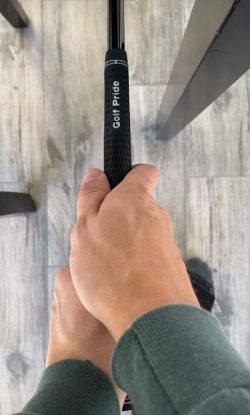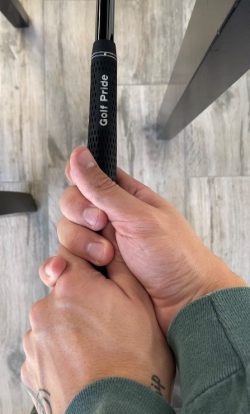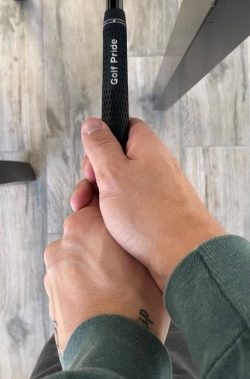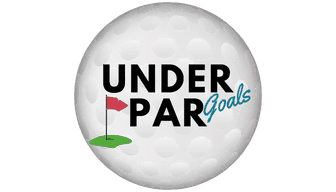Tell me if this sounds familiar.
You step behind your spot at the range, take your phone out, and take a slo-mo video of your swing. You go back and look. Posture, good. Tempo, good. Swing plane, good. So why are you still missing everything right?
A simple change that a lot of golfers don’t think of is their grip. They will change everything before they change their grip. By just moving your hands slightly around the club, you can change everything about your shot shape.
I know all of this from personal experience. I was playing decent golf but knew that my swing was better than the result. I was watching a PGA Tour event on TV and saw a video of Rory Mcilroy swing. I noticed how turned over his left hand was. The next day I went to the range to see if that was a change I needed to make. All of a sudden my cut/slice turned into a 5-10-yard draw.
Sometimes it can be that simple.
There are two major grip faults that many players struggle with…a grip that is too weak and a grip that is too strong. A weak grip on the club will result in a big cut or a slice. A strong grip will have you drawing or hooking the ball.
Weak Grip
As you can see in the picture, both hands are on the left side of the grip.
This grip causes the club to be wide open on the downswing, making it almost impossible to close the clubface in time to hit pure, straight shots. Again, with this grip, the typical miss is a slice.

If you use a weak grip, you will need a lot of added rotation in the hands and wrists to square the clubface. Some pros get away with this. Phil Mickelson, for example, is pretty aggressive in his release. But, as we all know, when his timing is off, he can miss a lot of fairways (or perhaps hit the ball into a hospitality tent with a lead on the last hole of the U.S. Open).
Now of course, you aren’t likely to be sitting on the 18th hole of the U.S. Open needing a par to win. But you also aren’t practicing as much as Phil. So I wouldn’t recommend a weak grip.
Strong Grip
The difference with this grip is pretty obvious.
Now both hands are positioned on the right side of the grip. This will make the face very shut during the downswing, causing the ball to turn over too much and hook.

Too strong isn’t good either, but for most of you, a stronger grip is better than a weaker grip. There are a lot of good things that can happen with a strong grip.
Practicing with a strong grip helps to train you not to flip the club at the ball. Flipping might be the number one reason amateurs don’t hit the ball very far.
A good drill is to take a very strong grip, like the one above, and make half swings at the ball on the range, trying to hit the ball straight. If you flip or cast the club at the ball you’ll either hook it a lot or even shank it off the toe. If you do, shorten the swing even more until you feel where your hands need to be to hit it solid with that grip.
You’ll notice that it gets you into a really nice impact position with the hands ahead of the ball. From there you can gradually increase your swing and adjust your grip a little bit as you get better with the drill.
Eventually you’ll dial in a nice middle ground between the weak grip and the strong grip that works for you.
Neutral Grip
A neutral grip is right in between these two.
Every individual player will have a slightly different grip that is “neutral” to them, so it may require some practice and experimentation, but you can use the images here as a guide to get you in the right range.

Try using the drill above to figure out what is neutral to you. Most golfers are surprised that neutral to them is a lot stronger than they expected.
Choosing a Grip (Finding Your Best Neutral Grip)
I am a firm believer in if you’re trying to shape the golf ball, allow your swing plane to do it, not your grip. This is why when I’m teaching, I teach all my players the same way to hold the club. I am going to explain how to do this from a right-handed player’s perspective (just switch the directions if you’re a lefty!).
Start by making sure your clubface is square to your target. You’d be surprised by how much I have to fix that problem with my players.
Now when you grip the club with your left hand, make sure to hold it up near your fingers and not in your palm. Doing this will allow you to control the clubface more efficiently.
When you look down, you want to be able to see 2 or 3 knuckles of your left hand. If you see none, that means your grip is too weak. If you see all four, that means your grip is too strong.
As a second thought, try to align the “V” of your thumb and hand to your right shoulder. Now with your right hand, again grip the club with mostly your fingers to maximize control. Using the “V”, point it, too, at your right shoulder. Holding the club like this will establish a square clubface during the downswing, making it easier to come into the hitting area with a square clubface.
Release
How you release the club after impact will also help determine what kind of grip you need to favor.
Again, we are looking to have the perfect grip, but if you are not interested in making any swing changes, you can either strengthen or weaken your grip based on the release. If you release the club high, and your hands are high above your head at your finish, try to strengthen your grip.
A high finish will usually mean you are cutting the ball. A stronger grip will straighten out your ball flight. If you release the club low and have low hands at the finish, weaken your grip.
This will help you not to draw/hook the golf ball too much.
Changing Your Grip
The biggest thing with changing your drip is to not get discouraged!
Even though it may seem like a small change, how you hold the club is everything. Once you change it, it is going to feel very weird for the first couple of weeks. You may encounter some misses you’ve never had but that’s okay!
While you are working on your grip, it’s also a good time to make sure you have the right size golf grips as well.
Once your new grip feels natural, that is when you’re going to see some massive results. So hang in there, perfect that grip, and hit it straight!

